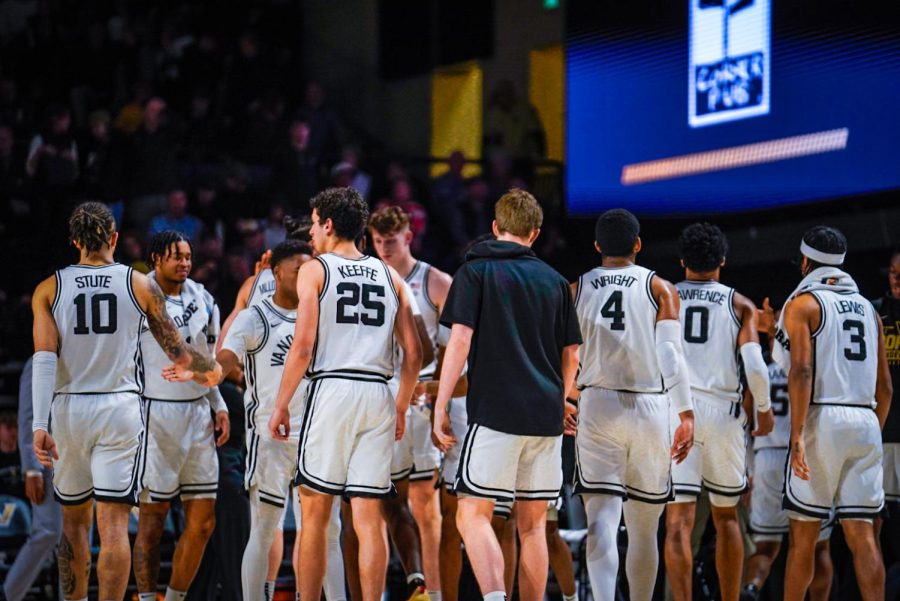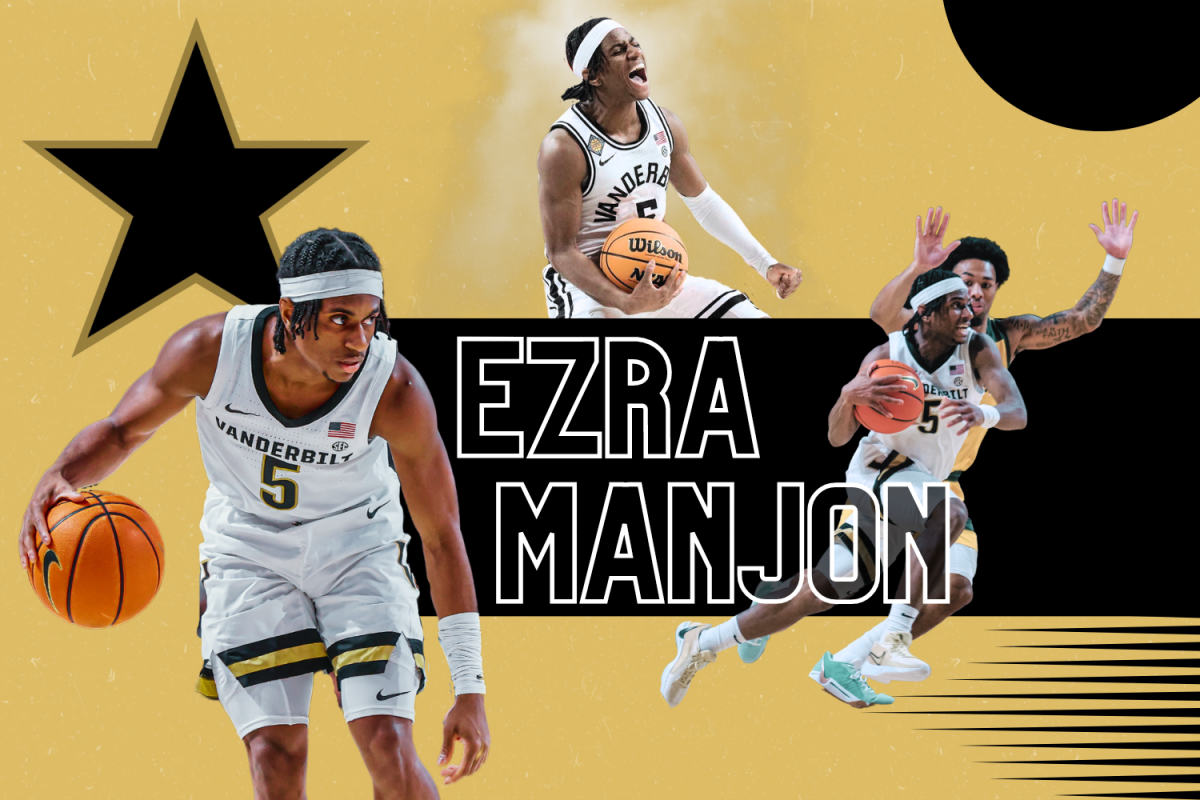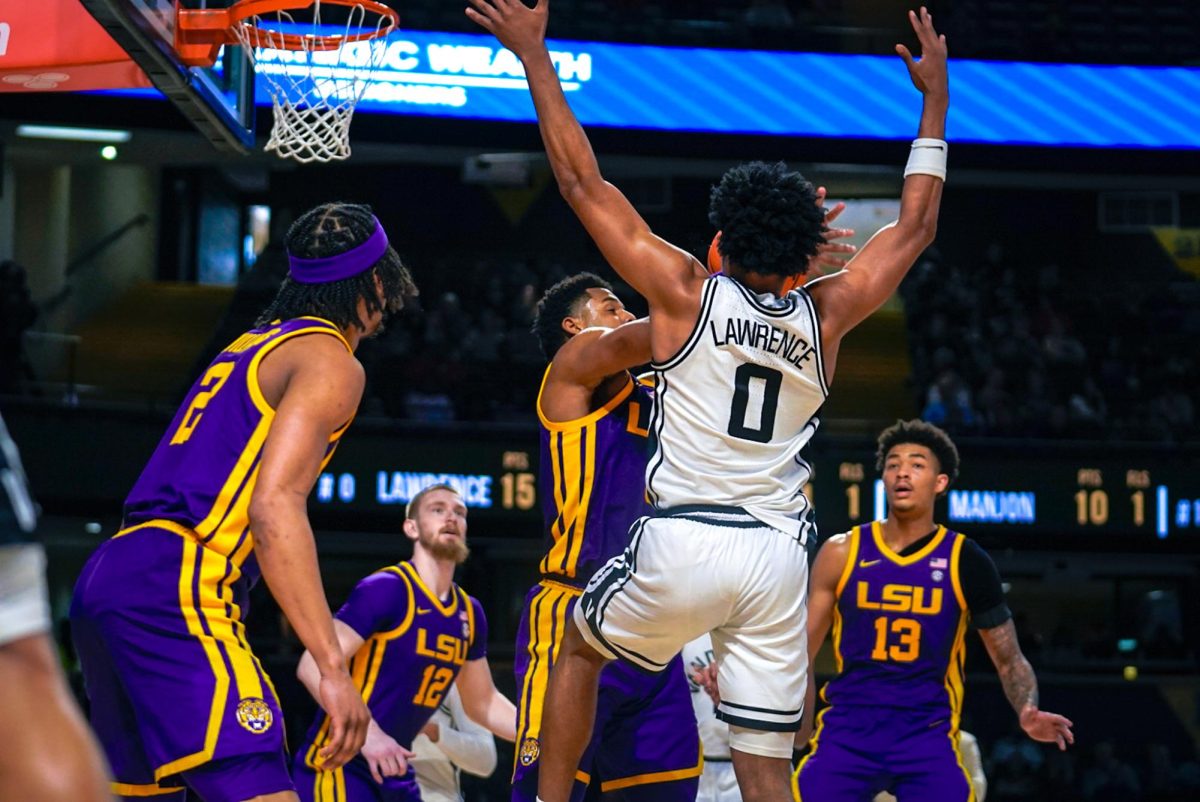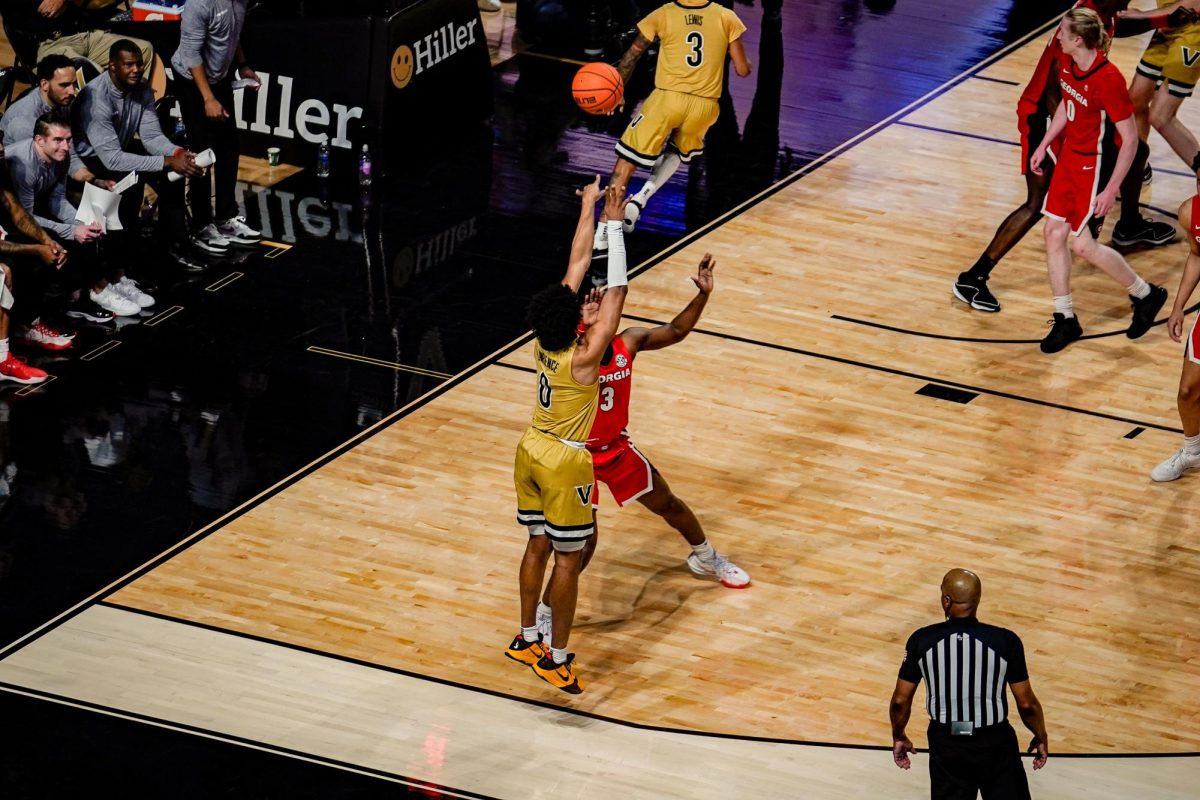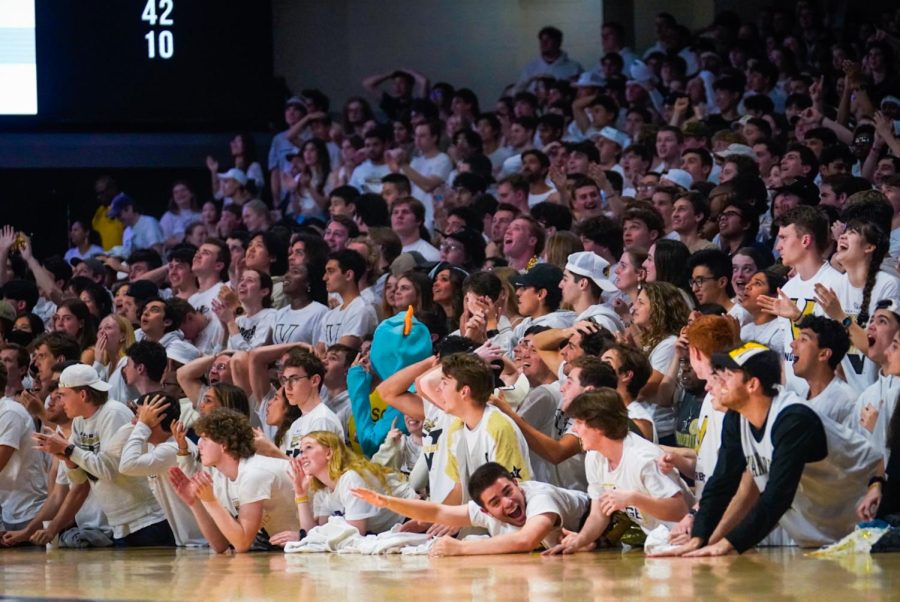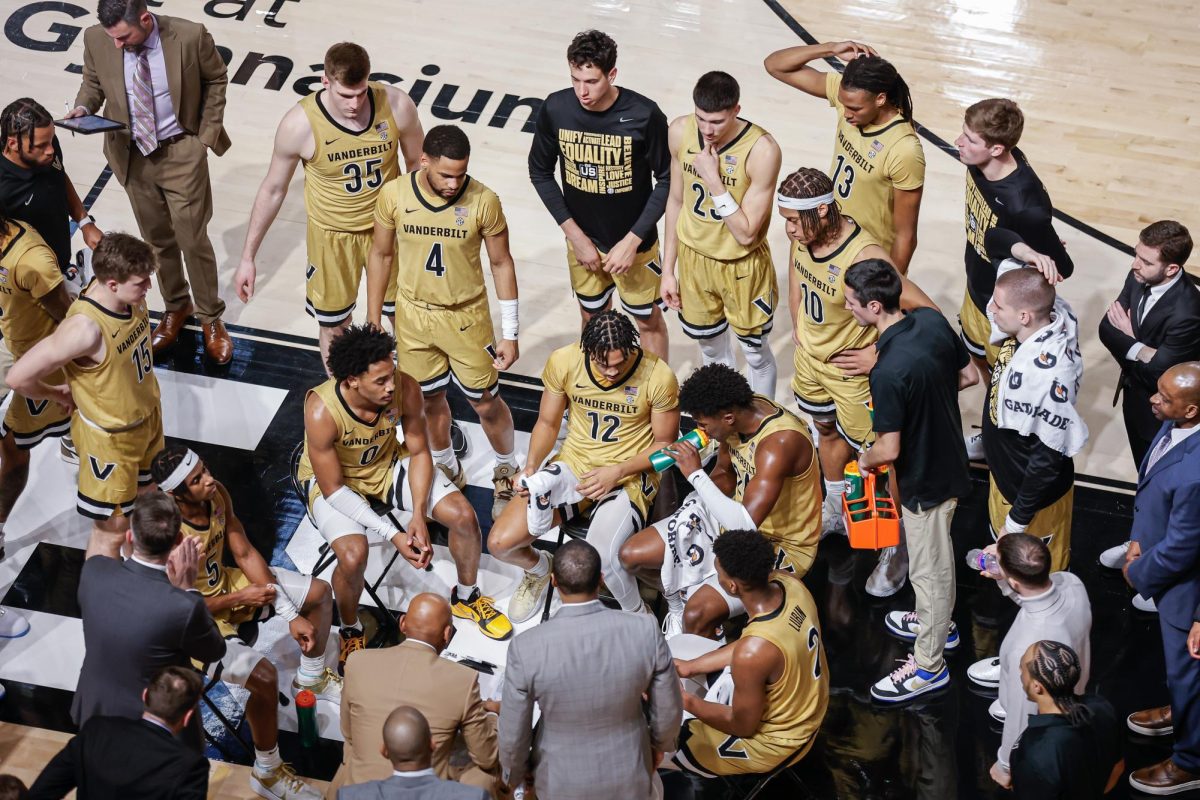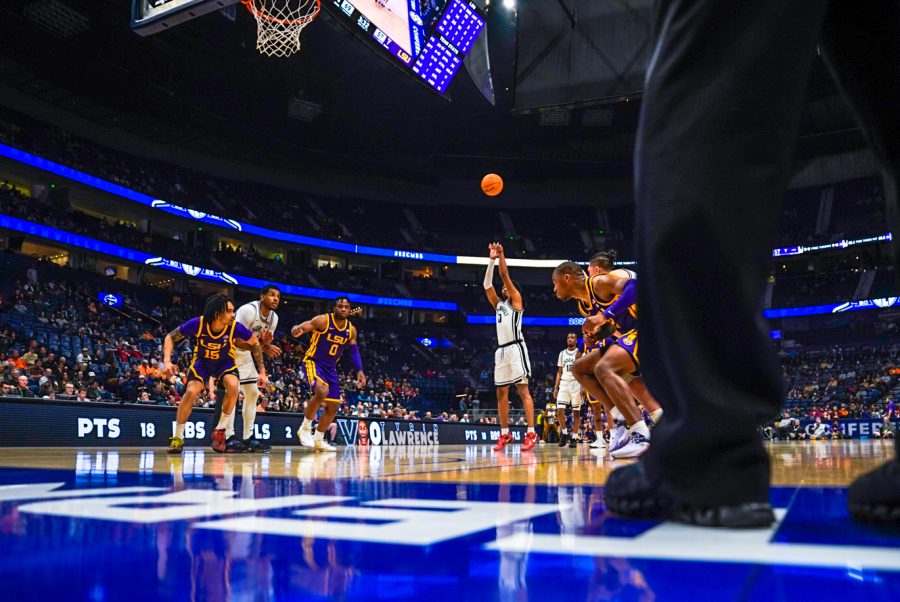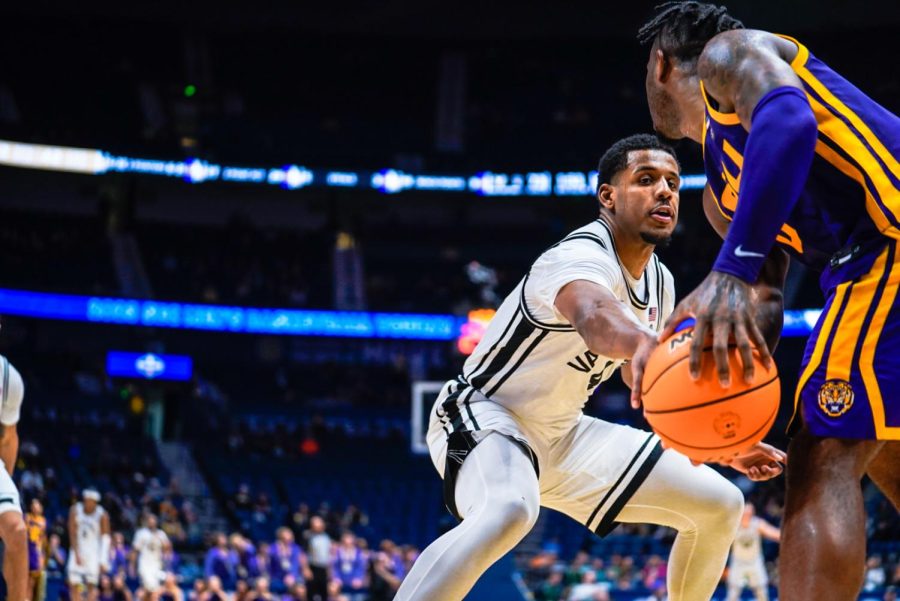Vanderbilt (18-13, 11-7) is winners of eight of its last nine and heads into the SEC Tournament playing its best basketball of the year. The Commodores need not go further than down the street for this year’s SEC finale, which will take place at Bridgestone Arena.
After a remarkable in-season turnaround, the Commodores have played themselves back onto the NCAA Tournament bubble. Jerry Stackhouse — named SEC Co-Coach of the Year on Monday — has Vanderbilt peaking in March, thanks in large part to Jordan Wright and Ezra Manjon in the absence of star center Liam Robbins.
Without further ado, here’s the sports staff’s thoughts on Vanderbilt’s last season-surge, its March Madness outlook and more.
1. What was Vandy’s NET before and after losing to Alabama and why hasn’t it gone up more since then?
Bryce Smith, Sports Editor: Prior to the Alabama game, Vanderbilt ranked No. 93 in the NET. After the 57-point drubbing in Tuscaloosa, the Commodores dropped 14 spots to outside of the top 100 at No. 107. Winners of eight of their last nine, Vanderbilt has jumped 21 spots in the NET (No. 82) since its date at Alabama. Still, it seems like the Commodores should be higher in the metric to reflect their impressive 9-10 record in Quadrants 1 and 2 combined.
The Hustler did a deep dive into Vanderbilt’s standing and the overall NET system and came to this conclusion: Nobody knows how or why certain teams are more favored by the computers than others. One factor that seems to be vastly important, however, is scoring margin. In sum, Vanderbilt won its 11 SEC games by a combined 67 points, essentially offsetting the 57-point loss to Alabama. That disparity leaves the Commodores with a net efficiency of just 0.4 points per 100 possessions, which ranks No. 82 in the country.
2. What are you watching for from the Commodores in the SEC Tournament?
Aiden Rutman, Deputy Sports Editor: I’m glad there are a few of us, because this is such a challenging question to answer in just a few sentences. That said, the biggest thing I’m looking for is Vanderbilt’s lineup structure. I alluded to it a little bit on this week’s episode of Live from West End, but the approach has varied in the two-ish games since Liam Robbins went down. Quentin-Millora Brown will receive the bulk of the playing time, but he isn’t invincible. Whether it’s a minutes or foul issue, QMB will hit the bench during these games. Will Malik Dia see some time at center like he did in the Kentucky game? Or will we see the small-ball lineup that features Myles Stute playing at the five? The offensive advantages that this group boasts are a massive plus, but the lack of size came back to bite it on the boards. Tolu Smith (nine offensive rebounds) and Mississippi State feasted on the offensive glass and it almost cost Vanderbilt the game.
Brandon Karp, Lead Sports Analyst: To Aiden’s point, there are so many things Vanderbilt has done well to be successful across the last nine games. While it was a relief to see Vanderbilt perform well against Kentucky and Mississippi State in the absence of Liam Robbins, Vanderbilt’s interior presence will be a huge X-factor in the tournament. With QMB potentially being the only big in the rotation, the Commodores will rely on other players to step up on the boards. Fortunately, Tyrin Lawrence and Jordan Wright have made their presence felt on the glass lately, with each averaging 6 rebounds per game across their last three games. Another thing to look out for will be Vanderbilt’s transition scoring. With Stackhouse’s tendency towards smaller lineups, there should be some versatility in fast-break looks. Lawrence has been unbelievable lately converting drives in transition, but it would be huge if the Commodores could pick up some transition threes from Trey Thomas and Myles Stute.
Frankie Sheehy, Deputy Sports Editor: To go off Brandon a bit, the Robbins-less Commodores will need to rely a lot more on speed and fast breaks in the style they did against Mississippi State. Much of that will come from Manjon’s speed and the necessity of forcing turnovers from the whole team. As I alluded to on the podcast, the Commodores will likely need to sustain the sort of energy they’ve been playing with over at least three games in three days in front of a neutral crowd. Now that the blind optimism surrounding Vanderbilt has turned into expectation, it may be a bit difficult to keep that energy up. A flat, low-energy performance won’t beat Kentucky, Texas A&M or really anybody else. The dynamic sort of offense and defense we’ve seen in recent games will need to be sustained for Vanderbilt to have a chance of making the weekend of the SEC Tournament and the Big Dance.
3. What does Vanderbilt need to do to get on the right side of the bubble?
Jonah Barbin, Sports Copy Editor: Win two more. The Commodores have to take care of business against LSU and then find a way to beat Kentucky again. I don’t expect Vanderbilt to have a problem with LSU — its victory over Vanderbilt can be chalked up to the Tigers playing way over their heads. In terms of a round three date with the Wildcats, it’s definitely not going to be easy, especially without the contributions of SEC Defensive Player of the Year Liam Robbins. Luckily, Vanderbilt already has a formula to do just that, as Robbins played a mere four minutes in the win against Kentucky last week before leaving with an injury that would ultimately keep him out for the rest of the season.Wright needs to continue to light up the scoreboard, Lawrence must continue to embody a pro-level player and Manjon must continue to utilize his quickness to keep defenses off balance. After being outrebounded by Mississippi State 2:1 in their regular-season finale, Vanderbilt will need either Millora-Brown, Dia or Lee Dort to do something to stop phenom Oscar Tshiebwe on the glass. Just for reference, Tshiebwe collected 20 boards the last time these two teams matched up. I know that there’s fear that two games will not be enough, especially with Texas A&M not receiving a bid after its run to the finals of the SEC Tournament last season. In this case, I think winning 8 of 9, including four Quad 1 victories plus a decent tournament performance will be enough for the committee to squeeze the Commodores into March.
4. Has there been any update on Dort’s availability?
Smith: Jerry Stackhouse confirmed during his SEC Tournament media availability on Wednesday that Dort would suit up for Vanderbilt against LSU. Dort’s return to the lineup will be a massive boost for the Commodores without Robbins.
Dort, the 6’10 center, has not played since suffering a foot injury against Alabama on Jan. 17. The freshman averaged 3.1 points and 2.6 rebounds per game in 12 games of action early in the season. Without Robbins, however, Dort stands to see an increased role and should be a help for Millora-Brown — Vanderbilt’s only other active player above 6’9 — down low.
Barbin: I can’t wait to see Dort back in action. He’s one of the strongest recruits in the Stackhouse era to date and should provide the Commodores with an immediate boost. Millora-Brown has struggled to control the boards on his own, so it will be interesting to see if Stackhouse decides to throw two big men out there or perhaps give Dort significant minutes without either of his other two centers. Either way, watching a young talent like Dort get plugged into the lineup is exciting.
My only concern is that Dort has not truly settled into this program yet. I’m not sure how he will mesh with one of the hottest rotations in college basketball right now. If this team has a glaring need, though, it’s rebounding help, so Commodore fans should be ready to welcome Dort back with open arms.
5. Is it just me, or has recruiting not quite matched the high-level play of late? Can I assume recruiting will follow suit?
Rutman: I think the emphasis this season has definitely been directed toward the on-court product, especially with the success the team found in the SEC. It is, however, worth noting that transfer portal recruitment has yet to begin, and I expect that to be where Vanderbilt does much of its damage for a couple of reasons. For starters, the one-year graduate degree is appealing for athletes whose professional stocks aren’t quite there yet. They get the chance to play in one of the most prestigious athletic conferences in the hopes of getting to the next level, but if not, they can always fall back on a degree from a top-tier institution. Secondly, Robbins winning defensive player of the year and earning first team All-SEC honors as a former transfer could serve as a blueprint for future transfers. I view Manjon’s improvement this season (and his projected improvement next season) in a similar light. Lastly, and more generally, I think that Stackhouse’s — as well as the program’s — overall success this season will make West End an even more attractive transfer destination.

